Text
New post! This was a lot of fun to read about. I've seen many fujizuka in my life, and I think it's a wonderful way to make mountain worship more accessible.
9 notes
·
View notes
Text
Professions list
I'm planning on making a list of professions and which kamisama are considered to be their patrons (so to speak). This is not to make a 'correspondence list' but to help people who feel lost about which kamisama to worship. Please send me any professions you don't see listed below the readmore that you'd like me to include via ask, submission, or reply!
Alcohol Maker
Artist
Astronomer, Astrologer
Athlete
Banker
Bartender
Businessman
Construction
Cook/Chef/Food Service
Craftsman (general)
Dancer, Stripper
Delivery Person, Mailman
Electrician
Factory Worker
Farmer (general), Gardener
Fashion Designer
Firefighter
Fisherman
Florist
Hair Stylist, Makeup Artist
Hotel Clerk
Hunter
Janitor, Cleaner
Jeweler, Jewelry-maker
Judge
Logger, Woodworker
Machinist
Mall worker, Department store worker
Mechanic
Medical Professional (Doctors, Nurses), Pharmacists
Merchants
Metalworker
Meteorologist
Miner
Musician
Oil Drilling
Paper-making
Photographer, Videographer
Physical Labor (general)
Pilots, Cabin Attendants/Flight Attendants
Plumber
Poet
Post Office Worker, Deliveryman, UberEats, Doordash
Potter
Professor or Teacher
Retail, Cashier, Customer Service
Researcher
Rice farmer
Sailor, Shipbuilder
Scholar, Researcher
Scientist
Sex Worker
Singer
Surveyor
Teacher
Television Reporter and accompanying staff
Textile workers
Veterinarian
Writer, Reporter, Journalist
14 notes
·
View notes
Text








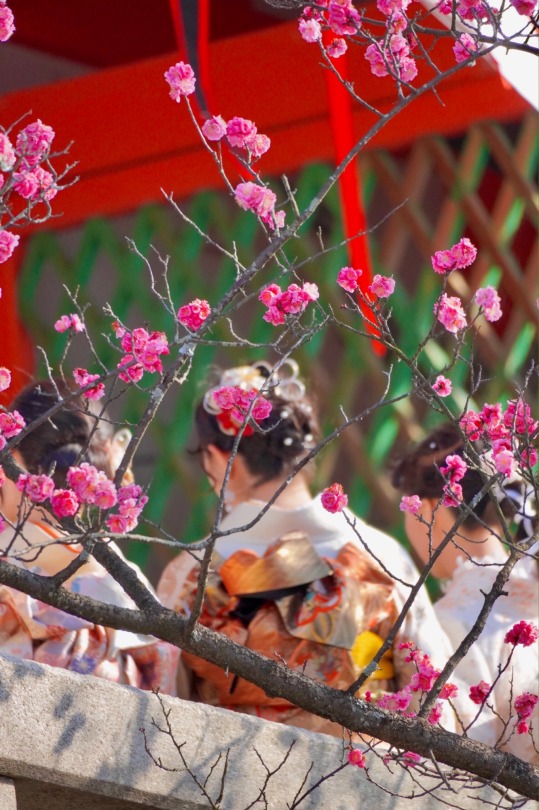
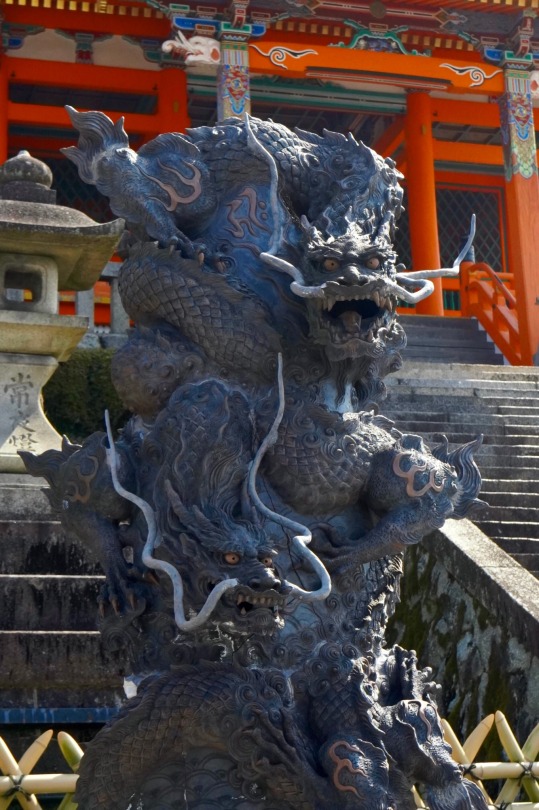
京都 清水寺 🐲青龍会🐉 2024年3月15日
kyoto kiyomizudera templ 🐲seiryue🐉
292 notes
·
View notes
Note
Can you say more about why you don't like Shokai Koshikidake? I couldn't find anything online related to the accusations you made.
Yes, here.
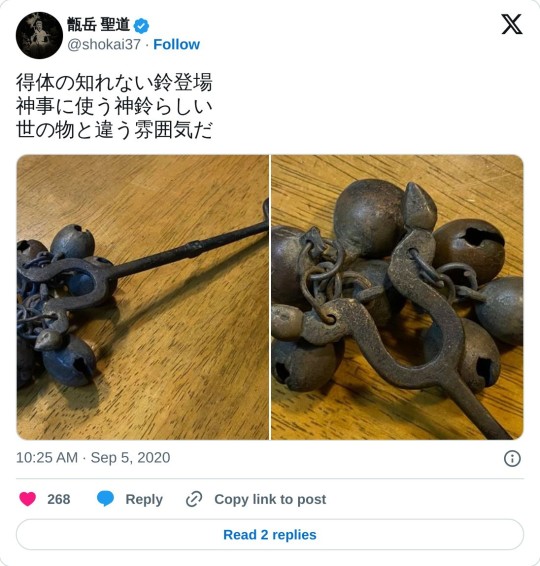
He directly acknowledges their use in Korean shamanism and exclaims his goal of using them in a Shinto ritual which is highly inappropriate.
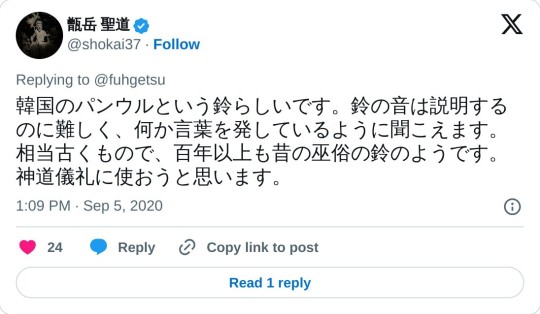
If you need translation, you can have the Twitter automatic translation if you click on the links.
3 notes
·
View notes
Text
Household Festivals in Shinto
Shinto festivals are usually celebrated at shrines. For those who do not live near a shrine, here is my adapted festival calendar. The dates for these festivals may vary due to astronomical or calendrical reasons.
New Year's Day (Oshogatsu):
On New Year's Day, eat and make lucky foods known as Osechi. Some recipes are listed here. Many Japanese people go to a shrine or temple for the first time in the new year, a practice called hatsumode. Instead of this, worshipers abroad could try offering sake at the kamidana.
Setsubun
Setsubun marks the beginning of spring. This is celebrated on either February 3 or 4. The date for Setsubun moves one day every 20 years. On this day, children throw roasted soybeans out the door or at an adult wearing an oni mask and chant "(鬼は外! 福は内!" (Oni go outside, luck come inside!). You can also eat roasted soybeans equivalent in number to your age.
Hinamatsuri
Hinamatsuri is held on March 3 at home by families who often are gifted hina dolls. These are carefully laid out, with votive miniature mochi in front of them. Special lanterns are laid out on both sides. Sometimes there are many dolls to play music and entertain the main couple. The purpose of this holiday is to pray for a good marriage for your daughter. Of course, this is quite heteronormative, but I wanted to include this just in case.
Haru Higan
Haru Higan is usually celebrated around March 20 for seven days. On this day, those with Japanese ancestry can worship their ancestors. Everyone can appreciate the coming warmth of spring as well.
Tanabata
Tanabata is usually celebrated on July 7, though some celebrate it on August 7. This commemorates the day that two literally star-crossed lovers, an oxherd and a weaver, can meet by crossing the Milky Way. If it rains, it is said that the weather prevents them from meeting until the next year. If it is clear, they are able to be reunited. You can write wishes on pieces of paper and hang them on bamboo stalks.
Obon
Obon is a major summer holiday held in honor of ancestors on July 15 or August 15 depending on the family. This one is often more Buddhist-flavored. You can make a small fire (real or symbolic -- and please be mindful of fire safety) as a landmark for your ancestors to find your home. Traditionally, specific altars just for the ancestors who return during Obon are constructed. A common practice is to construct horses and cows out of cucumbers and eggplants, respectively. The method for this is simple -- simply stick toothpicks in for their legs! It is said that this is to make ancestors come faster and leave slower. Bon Odori (Bon Dances) are held where slow traditional songs are played, and locals dance in a circle around a high platform with a drummer on it. This is a time of much fun and games. Fires are also lit at the ancestors' departure.
Tsukimi
Tsukimi is the moon-watching festival held on the eighth month of the lunar calendar on the 15th day. Traditions for this festival include making tsukimi dango (recipe here) and offering them on a sanbo tray by a window. You can also offer seasonal fruits and vegetables, and sprigs of susuki, or pampas grass.
Aki Higan
Aki Higan is the fall festival on September 22 or 23 marking the beginning of fall and cooler seasons in Japan. This is another day for worshiping one's ancestors.
Preparing for the New Year
At the end of the year, get mochi, shimekazari and any other items you need in preparation for the New Year. You may also wish to clean your home at this time.
*I may update this list later!
23 notes
·
View notes
Text
Hi, Shintō practitioner here. Shintō is absolutely 100% open. There are no closed parts. There's Onmyōdō, which is not a sub-type or sect of Shintō but a separate practice which includes Shintō and Daoist origins, which is initiatory. Otherwise, use common sense and respect, but it's open.
I would like to say most of these religions are not pagan, though, by definition -- and OP was specifically asking for pagan religions. Many Shintō practitioners find it offensive to group our religion in with paganism as it gets the New Age treatment often. Also, I'm not a Druid but from what I understand, Druidry is not closed.
Open paganism
Is there a thing as open paganism list? I am curious to know as nowdays many are clamied to be closed - especially for yte people. Even the old religions of old yte nations are seemed nowdays to be robbed of us what can we believe in if everything we do is racist even breathing and the sheer existing is wrong?
82 notes
·
View notes
Photo
Happy Hinamatsuri! I was raised with the understanding that it was a festival to pray for a daughter's good marriage.
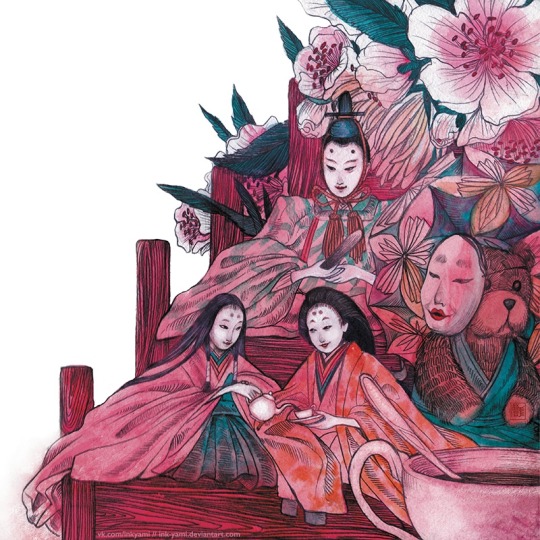
Hina-matsuri (雛祭り) // Peach Festival — Girls’ Day in Japan. Celebrated each year on 3 March, it is most known for displaying platforms with a set of ornamental dolls (hina-ningyō) representing the royal court of the Heian period.
The predecessors of hina-ningyō could be Nagashi-bina (lit. “doll floating”) ceremonies, which were held around the country, where participants make dolls out of paper or straw and send them on a boat down a river, carrying one’s impurities and sin with them. The evolution from paper dolls to the wooden/ceramic ones, from throwing the dolls away to keeping them as a traditional decor has gradually led it to the intricate designs of modern hina-ningyō.
One of the most famous parts of Hinamatsuri is the special display of seated male and female dolls, which represent a Heian period wedding, but usually described as the Emperor and Empress of Japan. These may be as simple as pictures or origami, or intricately carved and dressed dolls. More elaborate displays will include a multi-tiered doll stand representing ladies of the court, musicians, and other attendants, with all sorts of accoutrements.
The celebrations on the Girls’ Day are dedicated to wish girls health, joy and happiness.
309 notes
·
View notes
Text
Shrines and temples in Japan do health and longevity blessings for pets. Some shrines are known for the kamisama's ability to return lost pets.


She's being purified!

I believe she's offering tamagushi (the branch at her feet) here?

They also have offerings and amulets for your pet, so your pet and kamisama can share in the same drink (pet-friendly specialty milk instead of sake). This one's for cats. Fukushima Hachimangū, this is so cute!!!
Delightful images from here and here.
I love videos of people performing religious ceremonies for small animals. Especially if it’s not something a small animal could participate in theologically.
85K notes
·
View notes
Text
New post: The Kami of Kumano is up!
8 notes
·
View notes
Text
Review: The Essence of Shinto

I have written before of Yamakage's authorship of multiple antisemitic conspiracy theory books. That said, given that there are not a lot of English language books about Shintō, I find this book is often recommended. It should not be recommended to anyone, not just because of the authorship, but for its misinformation. There is very little actual information that can be salvaged from this trainwreck of a book.
Koshintō is not an ancient practice - it's a new religious movement; an attempt to imagine an ancient Shintō, which is, in my opinion, inherently paradoxical, as the concept of Shintō as the name of a religion (and indeed the concept of a religion itself) were consciously constructed as recently as the Meiji Era, which is the 19th century. The archaeological and historical truth is that we do not know what Yayoi or Jomon period peoples believed, and Shintō is likely very distinct from that, and that is okay. While I understand the impulse to try to reconstruct Yayoi or Jomon era religions, I find the impulse to remove foreign elements like Buddhism to contain elements of xenophobia, and have found the idea of Shintō as truly ancient to be misleading at best. We do not actually have an ancient practice handed down to us. Japanese religious practice, first, is diverse -- regions do things differently. Kyushu area graves, for example, bear continental Chinese influence and have 土神 enshrined at their sides. Secondly, while I do think there is a necessity to undo the damage that State Shintō has done, it is not helpful to do so in a way that, at best, ignores and at worst, contradicts history.
Secondly, Yamakage Shintō is barely attested outside of Motohisa's writings. Many of the practices allegedly specific to Yamakage Shintō are common Japanese New Age theories, along with some condescension of traditional practices. One way to recognize this is his repeated use of the word "spiritual" (which presumably was either written スピリチュアル in the original text). It's ironic, then, that he puts down "bizarre cults and sects" (p.13). The aforementioned paragraph should explain why I am so skeptical of the Yamakage school when there is no such thing as ancient Shintō by definition.
Crucially, there is some dangerous and typical New Age medical misinformation here. He claims that certain chants or practices can heal different physical and mental health symptoms, which is not something anyone should say, much less someone who claims to be a religious teacher. This is a sidenote, but I am hoping that Paul de Leeuw did not absorb any of this, but am concerned as he trained under Yamakage.
Yamakage states "...Shinto leaders have been at the forefront of campaigns to restore the forests..." As much as Westerners want Shintō to be the Green Religion that saves the world, I've had very little luck actually encountering any shrine websites or articles that back this up, outside of the traditional practices of keeping very small sacred forests known as chinju no mori. If anything, the opposite has been documented. See Sacred Forests, Sacred Nation for more on this subject. I would be open to correction on this, but Yamakage provides no sources whatsoever; in fact, he provides no sources throughout his book for any of his factual or historical claims. Presenting the Showa Emperor as a source does nothing but reinforce fascist rhetoric about the emperor being the religious head, as he was at the time of State Shinto, and likely says more about his personal convictions than his religious ones. There is something eerily dystopian and fascistic in Yamakage's description of the people cheerily following the Showa Emperor's example.
I have noticed a tendency in some Japanese people to do what I think of as self-orientalism; an exoticization of your own body and culture to appeal to whites. It seems to me that Yamakage is doing such a thing, while simultaneously appealing to Japanese nationalistic sympathies, by saying it is an ancient, mysterious religion untainted by materialism. Demonizing materialism, in fact, goes against the actual practice of most Japanese -- many, many businesses regularly pray for prosperity and dedicate lamps to shrines, or will get ritual decorations for prosperity known as kumade during the November Tori-no-Ichi festival.
"Ajimarikan" is a chant that is, at best, shoddily derived from Buddhism, as is his use of mudra hand gestures. At worst, he completely fabricated this chant and doesn't even attempt to provide a meaning for this phrase. The Five Great Vowels Chant and the Heavenly Counting Chant are both chants that do not exist outside of this book.
Yamakage Motohisa also repeatedly uses Okinawan/Ryūkyūan religion as examples as if it is a part of Shintō, which it most decidedly is not. There was forced assimilation because of colonization, to my understanding, but the practice is entirely different from Shintō.
This is kind of a briefer overview than I originally intended, but I hope this provides some information on why I dislike Yamakage and this book so much. My hope is that he stops being recommended as any sort of resource and a better one is translated soon.
36 notes
·
View notes
Note
Hello!
I am studying Buddhism and Shintō and I was wondering how people combine these two worldviews in Shinbutsu-Shūgō? As I know Shinto is very focused on nature and love for the world around us, while Buddhism believes that we are in the wheel of samsara, the world is full of suffering and we should leave here to Nirvana
Thank You in advance for Your answer.
I don't think Buddhism encourages leaving this world in any way, but rather teaches us how to deal with hardships, trauma, and inequality in this life. It's understandable why many people think Buddhism is more afterlife-oriented, especially in Japan, but this definitely does not mean that this world is inherently bad. It's more of a neutral perspective, from what I've read and heard. Both Shintō and Buddhism acknowledge that the natural world can harm, and the ways this is explained, as well as how humans react to it, varies by sect.
I think Zen temples are a good example of how Buddhism can focus on nature (though I'm not Zen, so please don't take my word for this!). There's a reason why monks trained in nature, in mountains far from the city. There's also a reason why even today, Shugendō practitioners keep practicing their asceticism in the wild. Reminding ourselves that we are part of nature is still Buddhist; being a good steward for nature is probably a way to build good karma (toku) which you can dedicate to others. To give a concrete example, I see veterinarians and those involved in animal welfare and rescue as being of service to Kannon-sama, because that is a field in which compassion is a driving force. Not that you have to be Buddhist to be a veterinarian, but I believe it to be a profession that is inherently compatible with Kannon-sama's goals. Of course, this includes wildlife rehabilitation, and I'd say is even more relevant for 'uncharismatic' wildlife such as vultures, who play a valuable part in the cycle of life on this planet. I lack knowledge in the field of plants, but I'm sure there is something similar to be said about people who engage in environmental activism, guerilla gardening, etc.
Shintō isn't necessarily about love for the world around us, but appreciating connections between people, kamisama and so on, spanning from history to now: the ancient peoples who discovered rice could be edible, to those who first farmed with it, to the farmers currently harvesting it, to the rice itself, full of life, on your plate.
Thank you for sending me this question, it really got me thinking!
12 notes
·
View notes
Note
May I ask if you know of some shrines to Ame-No-Uzume? Or a way to find shrines to this Kami (English or Japanese are both fine!)
Ame-no-Uzume-no-Mikoto is enshrined in many, many places! Here's an incomplete list on Wikipedia. Many shrines enshrine her in their grounds while not having her as their main kami.
Honestly, Wikipedia isn't the worst for finding shrines, but Yaokami is a good one for Japanese sites. They even have some pretty niche shrines and temples on there, but there often isn't any information beyond the name of the kamisama enshrined. I tend to use it as a starting point if I have a region I'm looking in.
Hotokami is probably the best one I've seen, as it has user-submitted photos and a lot of users post shrines' shrine history signs.
15 notes
·
View notes
Note
how would you recommend going about 'finding' your own kami? i'd assume it's quite a personal journey, but would you have any tips or anything to help out the average (new) practitioner? thank you!
The answer to this depends on if you have Japanese heritage, and if so, how much you are able to find out about them. My family immigrated recently, and I was able to do some pretty comprehensive family research. Things to look for here are:
Family crest, as some crests are associated with specific kamisama
Location, as every prefecture (formerly their own countries) have a head shrine
Profession, as some kamisama are associated with specific professions (i.e. Ebisu-sama with fishermen)
My initial approach to worshiping kamisama was, like many people raised in the West, pagan-flavored, so I wouldn't really recommend it.
If you have no Japanese heritage, look for:
Profession: What kamisama are associated with your professions? This may not be readily available in English, so feel free to ask around about this. I hope to make this information more readily available with my Patreon.
Interests: If you like to study, Tenjin-sama may be of interest to you, even if you are no longer a student.
Being moved: If you read a myth about a kamisama or a shrine's history and feel particularly moved, this is a pretty solid lead on which direction you should go.
Honestly, simply being intrigued by a kamisama is a pretty good reason, especially if your interest lasts through some research and is consistent.
17 notes
·
View notes
Note
Are the Shinto Gods all knowing? And can Shintoism work with other Religions or do you have to be strictly Shinto? :)
I don't think so. The answer may depend on who you ask, but generally, when we pray in gratitude or to ask for something, we specify details (like say, "I'm applying for a job at this company, I pray I am accepted" or "I am grateful that this company has hired me").
We also tend not to use the word "God" for kamisama, as it has this kind of connotation. That said, you can practice other religions alongside Shinto! Just make sure your altars and prayers are separate.
11 notes
·
View notes
Text
New Year's Eve Dream Divination
Another New Year's practice is dream divination. Ascertaining your first dream (hatsuyume) helps you predict the year ahead.
The lucky symbols you want to dream about are:
Mt. Fuji
Hawks
Eggplants
Some will list further elements after 3, but this is the most universal.
You can try to improve your luck and your first dream by going to bed with a printed image of the Seven Lucky Kami with the line "なかきよの とおのねふりの みなめさめ なみのりふねの おとのよきかな" under your pillow.
Not dreaming these symbols doesn't mean you will have a horrible year! It's more fun and lighthearted than anything in my experience.
21 notes
·
View notes
Text
Japanese New Year's Rituals
Hello! As the year comes to a close, I realized I haven't written much about our New Years practices. I thought I'd made a post about this before, but apparently I hadn't, apologies if the other post happens to be a real post instead of a figment of my imagination.
Cleaning: Clean before the new year! This is to prepare the house for Toshigami-sama (see below) and to end the year on a good note.
Ritual: If you have a Japanese market near you, buy a kagami mochi (mirror mochi). This is the vessel (yorishiro) into which Toshigami-sama, the kami of the new year, will descend. Doors are usually adorned with a smaller form of shimenawa decoration known as shimekazari in order to designate the home as a clean, sacred space ready for Toshigami-sama's entry.
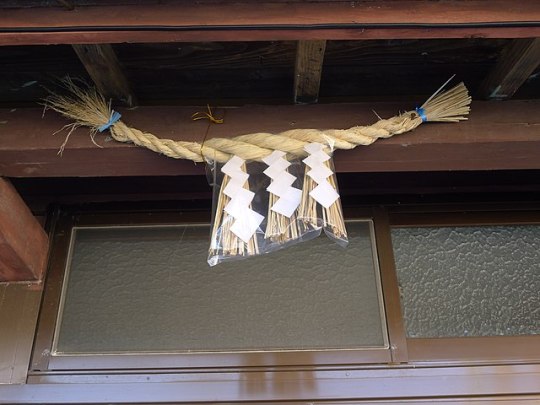
Image from Wikimedia Commons
Ideally, you also place kadomatsu by the doors, but this can be harder to obtain. This is a pair of bamboo ornaments, usually large, bundled in threes with various lucky decorations around the bamboo. There are fake bamboo versions in miniature sometimes available online. These are also vessels for Toshigami-sama to descend to.

Image from Wikimedia Commons
In Japan, families usually go to shrines or temples for the first prayer. In most other countries, this is obviously difficult, so I recommend either yohai (praying in the direction of a shrine you feel close to) or simply worshipping as usual at your kamidana. This is a good occasion to break out sake. Thank kamisama for health and life in 2023, and pray for a good, healthy 2024.
Food: Osechi food is the trademark of the new year. The contents of it can vary according to your family and any allergies or intolerances. Here are some recipes for anyone who wants to try! Another food traditional to the New Year Eve is toshikoshi soba, or "Year-ending Soba Noodles". The length of the noodles is associated with longevity and health.
I wish you all a happy holidays!
33 notes
·
View notes
